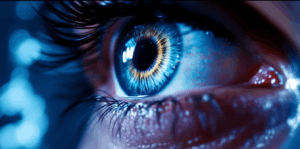
Alcohol Use Disorder DSM-5: Complete Guide to Criteria, Diagnosis, and Treatment at Legacy Healing Center
Key Takeaways
- DSM-5 defines AUD as 2+ of 11 criteria within 12 months, published by the American Psychiatric Association.
- Symptoms include loss of control, a strong desire to use alcohol, tolerance, alcohol withdrawal, and continued alcohol use despite risks.
- Alcohol Use Disorder DSM 5 severity levels: mild (2–3), moderate (4–5), severe (6+).
- Proper assessment requires detailed history, screening tools, and evaluation of daily life impacts.
- Effective treatment for depression, mental illness, and substance use often overlaps with AUD care, requiring integrated treatment plans.
- Early recognition and professional help improve outcomes and reduce the risks of relapse, health complications, and long-term impairment.
What Are DSM-5 Alcohol Use Disorder Criteria and Why Do They Matter?
The DSM-5 criteria for alcohol use disorder (AUD), published by the American Psychiatric Association in the Diagnostic and Statistical Manual of Mental Disorders, Fifth Edition, define the condition as a problematic pattern of alcohol use causing significant impairment or distress. To diagnose AUD, a person must meet 2 or more of 11 specific criteria within a 12-month period.
These guidelines replaced the older DSM-IV categories of alcohol abuse and alcohol dependence with one unified diagnosis that better reflects the severity spectrum of alcohol use and its impact on mental health and daily functioning.
Healthcare providers rely on these standardized criteria to ensure accurate diagnosis, consistent treatment planning, and improved recovery outcomes. For families and individuals, understanding these criteria highlights when alcohol treatment is not just beneficial but medically necessary.
What Are the 11 DSM-5 Criteria for Alcohol Use Disorder?
The DSM-5 outlines 11 diagnostic criteria for alcohol use disorder, each reflecting the behavioral, physical, and psychological consequences of continued alcohol use. Meeting at least 2 indicates mild AUD, while higher counts reflect more severe forms of addiction.
1. Loss of Control Over Drinking
Taking alcohol in larger amounts or over longer periods than intended, such as drinking more drinks or for extended sessions beyond limits.
2. Persistent Desire or Inability to Cut Back
Unsuccessful efforts to reduce or control alcohol use, even after repeated attempts.
3. Excessive Time Spent on Alcohol
Spending significant time to obtain alcohol, use alcohol, or recover from alcohol’s effects, often interfering with recreational activities or responsibilities.
4. Craving or Strong Desire to Use Alcohol
Experiencing a strong desire or urge to use alcohol, with persistent thoughts about drinking that interfere with everyday life.
5. Failure to Fulfill Obligations
Recurrent alcohol use leading to failure in work, school, or home responsibilities.
6. Continued Use Despite Social Problems
Continued alcohol use despite recurrent social or interpersonal problems caused or worsened by drinking, such as relationship conflicts.
7. Abandoning Important Activities
Giving up or reducing important social, occupational, or recreational activities in favor of drinking.
8. Drinking in Dangerous Situations
Recurrent use of alcohol in physically hazardous situations, such as driving or operating machinery while intoxicated.
9. Continued Use Despite Health Problems
Alcohol use continued despite knowledge of recurrent physical or psychological problems likely caused or worsened by alcohol.
10. Tolerance
- Markedly increased amounts of alcohol needed to achieve intoxication or desired effect.
- A markedly diminished effect with continued use of the same amount.
11. Withdrawal
- Alcohol withdrawal symptoms when drinking is reduced or stopped.
- Use of alcohol or a closely related substance to relieve or avoid withdrawal symptoms.
How Is Alcohol Use Disorder Classified by Severity?
AUD is classified into three severity levels based on how many of the 11 criteria are met:
- Mild (2–3 symptoms): Early-stage issues, often with cravings and attempts to moderate drinking.
- Moderate (4–5 symptoms): Noticeable impairment in work, relationships, and health, often with heavy drinking days.
- Severe (6+ symptoms): High likelihood of physical dependence, alcohol withdrawal, and multiple failed quit attempts.
Specifiers include:
- Early Remission: No criteria met (except craving) for 3–12 months.
- Sustained Remission: No criteria met for 12+ months.
- In a Controlled Environment: When alcohol access is restricted (e.g., hospital, jail, or residential facility).
DSM-5 Alcohol Use Disorder Symptom Clusters & Treatment Pathways
The DSM-5 organizes alcohol use disorder (AUD) criteria into four symptom clusters that reflect both behavioral patterns and physical dependence. Each cluster also guides treatment planning.
1. Impaired Control
- DSM-5 Criteria: Drinking more than intended, unsuccessful efforts to cut down, excessive time obtaining or using alcohol, strong desire or urge to use alcohol.
- Treatment Pathway: Motivational interviewing, cognitive behavioral therapy (CBT), and medication-assisted treatment, like naltrexone, can help patients regain control and reduce heavy drinking days.
2. Social Impairment
- DSM-5 Criteria: Failure to fulfill major role obligations, continued alcohol use despite interpersonal problems caused by drinking, giving up important social or recreational activities.
- Treatment Pathway: Family therapy, peer support groups, and social-skills training help repair relationships and restore balance in daily life.
3. Risky Use
- DSM-5 Criteria: Recurrent use in hazardous situations (e.g., driving intoxicated), continued alcohol use despite recurrent physical or psychological harm.
- Treatment Pathway: Trauma-informed therapy, relapse prevention training, and holistic approaches like mindfulness improve self-awareness and reduce negative consequences.
4. Pharmacological Criteria
- DSM-5 Criteria: Tolerance (markedly increased amounts of alcohol needed to achieve intoxication or desired effect, or markedly diminished effect with the same amount) and withdrawal (including use of a closely related substance to avoid withdrawal symptoms).
- Treatment Pathway: Medical detox, medication-assisted treatment, and close psychiatric monitoring at an inpatient treatment center are critical for safely managing withdrawal symptoms.
👉 By recognizing which symptom clusters are present, clinicians can create individualized treatment plans that combine therapy, medication, and holistic support.
Why Are DSM-5 Criteria Essential in Clinical Practice?
The DSM-5 provides a standardized framework for diagnosing and treating alcohol use disorder, ensuring consistency across treatment providers and reducing subjectivity.
Key clinical advantages include:
- Capturing the continuum of severity, unlike DSM-IV’s separate abuse vs. dependence categories.
- Recognizing craving as a core diagnostic factor, aligning with addiction neuroscience.
- Supporting insurance coverage for alcohol treatment based on severity level.
- Reducing stigma by framing AUD as a mental illness and medical condition, not a moral failing.
Research, including prospective studies, shows that applying DSM-5 criteria improves treatment matching, relapse prevention, and long-term recovery outcomes.
DSM-IV vs DSM-5: What Changed?
| Aspect | DSM-IV | DSM-5 |
|---|---|---|
| Diagnostic Categories | Alcohol abuse (1+ criteria), alcohol dependence (3+ criteria) | Unified alcohol use disorder (2+ criteria) |
| Number of Criteria | 4 abuse + 7 dependence (11 total) | 11 unified criteria |
| Severity Levels | Categorical: abuse vs. dependence | Dimensional: mild, moderate, severe |
| Diagnostic Threshold | Abuse: 1 symptom; Dependence: 3 symptoms | 2+ symptoms |
| Craving Criterion | Not included | Included as core criterion |
| Legal Problems | Required for abuse diagnosis | Removed (bias concerns) |
| Withdrawal Assessment | Dependence criteria only | One of 11 unified criteria |
How Do Clinicians Apply DSM-5 Criteria to Diagnose AUD?
Step 1: Gather Alcohol Use History
- Use nonjudgmental questions about heavy or binge drinking, frequency, and duration.
- Explore social, occupational, or recreational consequences of drinking.
- Screen for family history of alcohol addiction or mental disorders.
Step 2: Evaluate Criteria
- Review all 11 DSM-5 symptoms within a 12-month period.
- Document specific examples, such as continued alcohol use despite interpersonal problems caused by drinking.
Step 3: Determine Severity & Plan Care
- Mild: Outpatient therapy, motivational interviewing.
- Moderate: Intensive outpatient or medication-assisted treatment (naltrexone, acamprosate).
- Severe: Inpatient detox, residential care, and long-term treatment.
Step 4: Reassess Regularly
- Monitor treatment goals and progress every 3–6 months.
- Adjust care to prevent relapse and support long-term addiction recovery.
Common Mistakes to Avoid in Diagnosing Alcohol Use Disorder
- Confusing heavy drinking with AUD: Not all heavy drinking equals alcohol use disorder unless impairment is present.
- Overlooking functional impairment: Diagnosis requires evidence of disrupted daily life, social roles, or health.
- Ignoring co-occurring mental health disorders: Depression, anxiety, or even opioid use disorder may overlap with AUD and require integrated care.
👉 Pro Tip: Always use structured interviews (e.g., SCID-5) and validated tools (AUDIT, CIWA-Ar) for accurate assessment and to guide effective strategies for treatment.
Case Example: Applying DSM-5 Criteria in Practice
Sarah, 35, Marketing Executive
- History: Drinking 4–6 glasses of wine most nights, multiple failed attempts to cut back.
- Symptoms Met:
- Larger amounts/longer periods.
- Persistent desire to cut down.
- Time spent obtaining alcohol.
- Strong desire to drink after stressful workdays.
- Failure to meet work obligations.
- Continued alcohol use despite interpersonal problems with her husband.
- Diagnosis: Severe AUD (6 symptoms).
- Treatment Plan: Intensive outpatient care, naltrexone, individual therapy (CBT), and support groups.
- Outcome: After 6 months, reduced to mild AUD with major functional improvements.
Quick Self-Assessment Checklist for Alcohol Use Disorder
If you or a loved one are concerned about alcohol use, consider these DSM-5 guideline-based questions. If two or more apply within the past 12 months, it may be time to seek professional help.
- Have you often drunk more alcohol than you intended?
- Do you experience a strong desire or urge to use alcohol, even in risky situations?
- Have you continued alcohol use despite recurrent social or interpersonal problems caused by drinking?
- Have you given up important social, occupational, or recreational activities because of alcohol?
- Have you experienced alcohol withdrawal symptoms or used a closely related substance to avoid withdrawal symptoms?
- Do you need markedly increased amounts of alcohol to achieve intoxication or the desired effect?
👉 If you answered “yes” to 2–3 questions, this may indicate mild alcohol use disorder.
👉 4–5 “yes” answers suggest moderate alcohol use disorder.
👉 6+ “yes” answers often signal severe alcohol dependence, which may require inpatient treatment or a holistic depression treatment center.
This checklist is not a diagnostic tool, but it can help families and healthcare professionals recognize when professional evaluation and a treatment plan are necessary.
Symptom-to-Treatment Guide for Alcohol Use Disorder (DSM-5)
| DSM-5 Symptom | Description | Recommended Treatment Options |
|---|---|---|
| Loss of control over alcohol use | Alcohol is often taken in larger amounts or over a longer period than intended. | Motivational Interviewing, CBT, relapse prevention therapy, outpatient or inpatient treatment depending on severity. |
| Persistent desire / failed attempts to cut down | Repeated unsuccessful efforts to reduce or control alcohol use. | Individual therapy, goal-setting interventions, peer support (e.g., Alcoholics Anonymous), medication-assisted treatment to reduce cravings. |
| Excessive time spent obtaining, using, or recovering | Daily routines revolve around alcohol-related activities. | Intensive outpatient or residential treatment, structured schedules, social skills training, development of healthy coping skills. |
| Craving or strong desire/urge to use alcohol | Persistent intrusive thoughts about alcohol, especially in high-risk environments. | Naltrexone or acamprosate for cravings, CBT for trigger management, mindfulness practices, craving journals. |
| Failure to fulfill obligations | Alcohol use interferes with work, school, or home responsibilities. | Case management, family therapy, vocational support, holistic treatment approaches to rebuild everyday life functioning. |
| Continued alcohol use despite recurrent social/interpersonal problems | Relationship conflicts caused or worsened by drinking. | Family counseling, couples therapy, community support groups, therapy focused on communication and boundary-setting. |
| Reduced important social or recreational activities | Giving up valued activities because of alcohol use. | Experiential therapies (art, music, recreation), group therapy, lifestyle coaching, reintroduction of healthy recreational activities. |
| Recurrent use in physically hazardous situations | Using alcohol before driving or operating machinery. | Psychoeducation on risks, CBT for risk-taking behaviors, relapse prevention planning, legal/occupational support if needed. |
| Continued alcohol use despite physical/psychological problems | Drinking despite knowing it worsens conditions like depression, anxiety, or liver disease. | Dual diagnosis treatment centers, psychiatric care for co-occurring mental illness, integrated medication and therapy. |
| Tolerance | Needing markedly increased amounts of alcohol to achieve intoxication or desired effect, or experiencing a markedly diminished effect with the same amount. | Medical evaluation, medication management, possible inpatient treatment for stabilization, education groups on alcohol’s effects. |
| Withdrawal | Experiencing alcohol withdrawal symptoms or using a closely related substance to avoid withdrawal symptoms. | Medical detoxification, medication-assisted treatment (benzodiazepines in detox, acamprosate for maintenance), inpatient rehab for safety. |
Taking the Next Step: Alcohol Use Disorder Treatment at Legacy Healing Center
The DSM-5 alcohol use disorder criteria, published in the Diagnostic and Statistical Manual of Mental Disorders by the American Psychiatric Association, provide a clear, evidence-based framework for identifying problematic substance use. Meeting even 2 or more symptoms within a 12-month period—such as a persistent desire to cut down or control drinking, recurrent alcohol use despite social problems, or failure to fulfill major role obligations at work, school, or home—signals clinically significant impairment that requires professional help.
Left untreated, continued alcohol use can progress to characteristic withdrawal syndrome, severe dependence, and even life-threatening complications. Data from the National Institute on Alcohol Abuse and Alcoholism and the National Center for Health Statistics confirm that early intervention improves outcomes and helps patients avoid relapse.
At Legacy Healing Center, we go beyond diagnosis to provide individualized treatment plans aligned with the principles of modern addiction medicine. Our comprehensive programs integrate:
- Medical detox to safely manage alcohol withdrawal symptoms and prevent medical emergencies.
- Evidence-based therapies such as Cognitive Behavioral Therapy (CBT), trauma-informed therapy, and relapse prevention strategies.
- Medical assisted treatment (MAT), when appropriate, to reduce cravings and stabilize recovery.
- Whole body wellness, including mindfulness, nutrition counseling, holistic healing, and fitness programs to restore both body and mind.
- Family involvement and peer support groups to strengthen coping skills and support recovery beyond treatment.
Whether you or a loved one is struggling with addiction, substance abuse, or recurrent alcohol use, Legacy’s inpatient and outpatient programs provide the medical supervision, compassion, and structure needed to achieve lasting recovery and rebuild daily life.
📞 Call (888) 534-2295 today to speak with an admissions specialist at Legacy Healing Center or verify your insurance online, explore treatment options, and take the first step toward healing. Recovery is possible—and with the right care, you can move from surviving to thriving.
Frequently Asked
Questions about Alcohol Use Disorder DSM-5
How many symptoms are required for an alcohol use disorder (AUD) diagnosis?
A diagnosis of alcohol use disorder requires at least 2 of the 11 DSM-5 criteria within a 12-month period. This threshold represents mild AUD, while higher symptom counts indicate moderate (4–5 symptoms) or severe (6+ symptoms) presentations.
What’s the difference between alcohol dependence and alcohol use disorder?
In the DSM-IV, clinicians diagnosed either alcohol abuse or alcohol dependence. The DSM-5 replaced these with a single, dimensional diagnosis of alcohol use disorder, published by the American Psychiatric Association. This unified category better reflects the continuum of severity and captures patterns of problematic alcohol use more accurately.
What’s the difference between mild, moderate, and severe AUD?
Severity is based on the number of criteria met. Mild AUD is 2–3 symptoms, moderate AUD is 4–5, and severe AUD is 6 or more. Severe cases often involve tolerance (needing markedly increased amounts of alcohol to achieve intoxication or desired effect), withdrawal symptoms, and significant impairment in social, occupational, or recreational activities.
Can someone have AUD without physical dependence symptoms?
Yes. While tolerance and alcohol withdrawal are two of the 11 criteria, alcohol use disorder can be diagnosed without physical dependence. Many patients qualify based on behavioral symptoms, such as repeated failed attempts to control alcohol use, continued alcohol use despite interpersonal problems, or giving up important recreational activities.
Does heavy drinking always mean someone has AUD?
Not necessarily. Heavy drinking days raise the risk of developing AUD, but diagnosis requires impairment or distress as outlined in the DSM-5. For example, someone may drink heavily but not meet diagnostic criteria if they maintain daily life responsibilities without recurrent social or occupational problems.
How often should DSM-5 criteria be reassessed?
Reassessment should occur every 3–6 months during active treatment. This helps providers track progress, monitor relapse risk, and adjust treatment plans. Patients may move between mild, moderate, and severe classifications as symptoms change.
What if someone meets criteria but is in a controlled environment?
If access to alcohol is restricted—such as in a hospital, residential treatment center, or jail—clinicians apply the “in a controlled environment” specifier. Symptoms may return once alcohol becomes accessible, so careful follow-up is necessary before confirming remission.
What treatment options are most effective for AUD?
The most effective strategies involve integrated alcohol treatment programs that combine:
- Medication-assisted treatment (e.g., naltrexone, acamprosate, disulfiram).
- Evidence-based therapies like cognitive behavioral therapy (CBT), motivational interviewing, and trauma-informed care.
- Support groups such as Alcoholics Anonymous (AA) or other peer support communities.
- Holistic healing (nutrition counseling, mindfulness, and stress management).
This comprehensive approach addresses both the addiction itself and related mental health disorders, giving patients the best chance for recovery and relapse prevention.











 Verify Insurance
Verify Insurance 